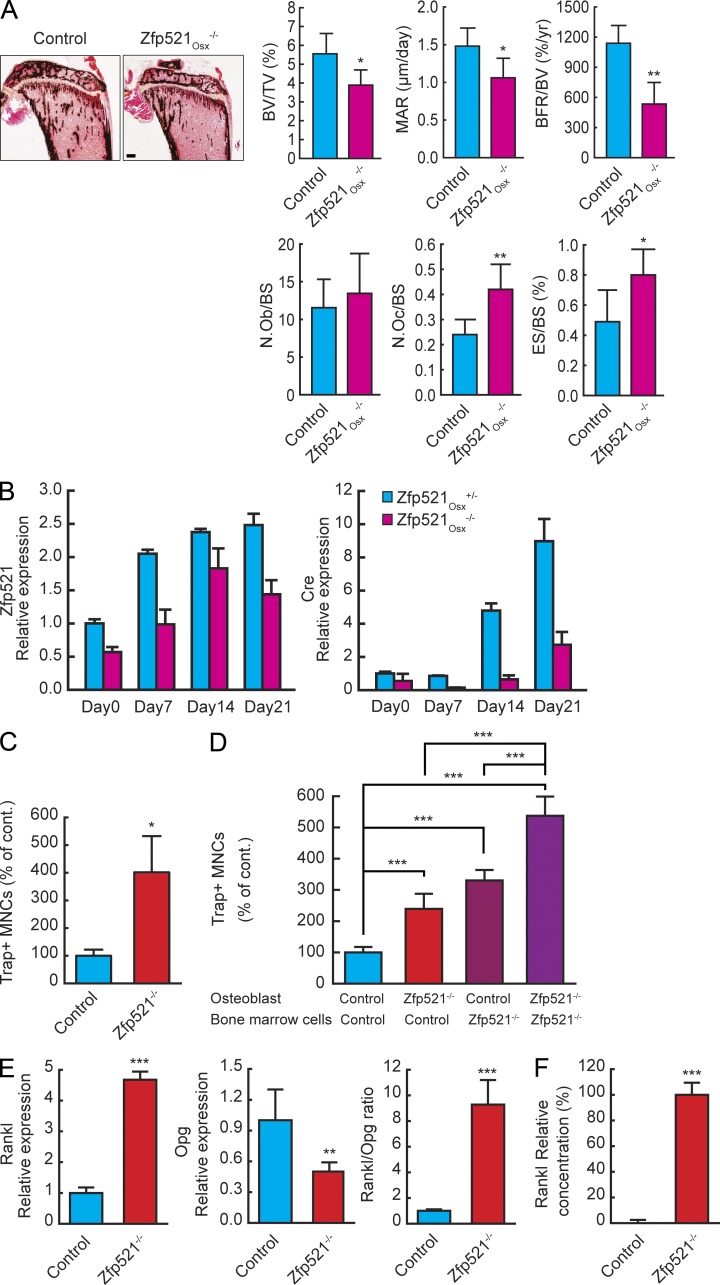Figure 3.
Zfp521 controls OB-dependent OC-genesis. (A) Von Kossa staining and histomorphometric analysis of tibia sections in 6-wk-old Zfp521Osx−/− mice and littermate controls (n = 6–8). N.Ob, number of OBs; N.Oc, number of OCs; TV, tissue volume. Bar, 520 μm. (B) Calvarial cells from Zfp521Osx−/− and control newborn mice were harvested and cultured on 6-well plates in OM. RNA was extracted at the indicated times, and Zfp521 and Osx-Cre expression were measured by qRT-PCR. (C) Total BM cells from Zfp521−/− and control mice were plated on 48-well plates, stimulated with 10 nM hPTH(1–34), and stained for TRAP. Number of TRAP+ multinucleated cells (MNCs) per well is shown. (D) Calvarial and nonadherent BM cells from control and Zfp521−/− mice were mixed as indicated in 24-well plates, stimulated with vitD3 and PGE2, and stained for TRAP. Bar graphs indicate the number of TRAP+ multinucleated cells per well. (E) RNA was extracted from the co-culture experiment in D, and the mRNA expression of Rankl and Opg and the Rankl/Opg ratio were quantified using qRT-PCR. (F) Control and Zfp521−/− calvarial cells were cultured in 24-well plates and stimulated with vitD3 and PGE2 as in co-culture experiments. RANKL concentration in the controls was below detection limit (n = 3). All data are means ± SD. Similar cell number and mRNA data were obtained from at least three experiments with three to six replicates per condition. *, P < 0.05; **, P < 0.01; ***, P < 0.001. See also Table S4.

